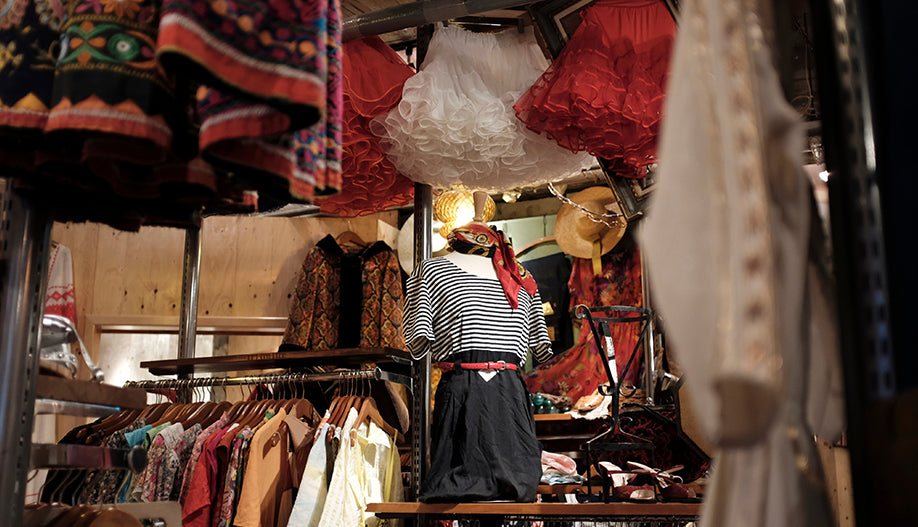
If you’re going to build a wardrobe of fun and unique thrifted garments, you should learn how to care for these vintage clothes. While it might be tempting to throw your retro finds in the washing machine, vintage clothes weren’t made to be cleaned with modern appliances, and doing so can damage them. That’s why knowing how to wash, store and repair your thrift store finds is the best way to ensure you’re able to wear them for years to come.
Here is everything you need to know about caring for your vintage clothing:

CLEANING VINTAGE CLOTHES
Read The Label
You might already know the sometimes-itchy tag on the inside of clothing is that garment’s wash and care instructions. Well, did you know those little tags have been around since the 1960s? That means, provided a previous owner didn’t cut it out, any vintage item you buy that was made in the past 60 years will spell out the best way to care for it. It’s important to refer to this label whenever you add a vintage piece to your wardrobe because it prevents you from ruining any potentially sensitive fabric with modern cleaning methods.
White Vinegar
If something is hand wash only or doesn’t have a wash and care label, it’s time to pull out the vinegar. White distilled vinegar is a great cleaning solution for most vintage clothes. When diluted in a water solution 1:10, vinegar is strong enough to eliminate odors and remove stains, while being gentle enough not to ruin your retro clothing. But remember, even if you’re trying to brighten your clothing, do not include bleach in your vinegar mixture—as it will create a toxic gas and ruin your new garment.
Know When To Dry Clean
No matter how much you like to DIY, sometimes it’s best to leave things up to the professionals. Certain fabrics like velvet, silk, linen, wool, and cashmere should always be dry cleaned—and this goes double when these items are vintage. Save yourself the headache and ensure your retro clothes stay nice by taking them to the dry cleaners.

LONG-TERM CARE FOR VINTAGE CLOTHES
Invest In A Steamer
Do you hate ironing? Great news—it’s safer to steam vintage clothes than to iron them. While steamers aren’t as precise as your average household iron, they’re easier to operate and reduce the risk of burning a hole in your fabric or over-starching the garment. Don’t forget to read the care label to ensure your garment can handle high heat and only used distilled water in your steamer to prevent staining.
Stock Beeswax, Buttons & Thread
Pre-loved clothing is just that, pre-loved. That means vintage clothing can find its way to your closet in less-than-ideal conditions. Stuck zippers and missing or loose buttons are among the most common blemishes with vintage clothes. But a little beeswax on stuck zippers will help them open and close like new again, and a simple needle and thread will repair any loose button.

STORAGE FOR VINTAGE CLOTHES
Use Protective Hangers
Have you ever sat in an uncomfortable chair for too long? Probably didn’t feel good. That’s what it’s like storing your clothes on low-quality hangers. Thin plastic hangers don’t offer any support and can be bad for your vintage clothing over time. If you want to keep your retro thrift finds nice, invest in heavy-duty silk or velvet-lined hangers. Thick-lined hangers will keep your garments from stretching and prevent slipping.
Use Garment Bags For Special Items
This suggestion might be extreme for your everyday wardrobe items, but if you own a quality vintage dress or suit you should consider storing these items in a garment bag. The bag will protect the clothing from dust, pets, or even bugs. Plus, it’s a great way to keep your nicer garments separated in your closet.
If you’re going to invest time and money into curating a vintage wardrobe, taking steps to care for your items is the best way to ensure you have them for a long time to come.
